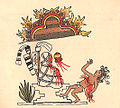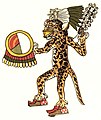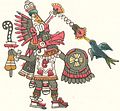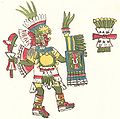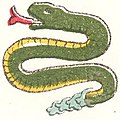
The Codex Magliabechiano is a pictorial Aztec codex created during the mid-16th century, in the early Spanish colonial period. It is representative of a set of codices known collectively as the Magliabechiano Group (others in the group include the Codex Tudela and the Codex Ixtlilxochitl). The Codex Magliabechiano is based on an earlier unknown codex, which is assumed to have been the prototype for the Magliabechiano Group. It is named after Antonio Magliabechi, a 17th-century Italian manuscript collector, and is held in the Biblioteca Nazionale Centrale, Florence, Italy.
Contents

It was created on European paper, with drawings and Spanish language text on both sides of each page. The Codex Magliabechiano is primarily a religious document. Various deities, indigenous religious rites, costumes, and cosmological beliefs are depicted. Its 92 pages are almost a glossary of cosmological and religious elements. The 52-year cycle is depicted, as well as the 20 day-names of the tonalpohualli, and the 18 monthly feasts.






